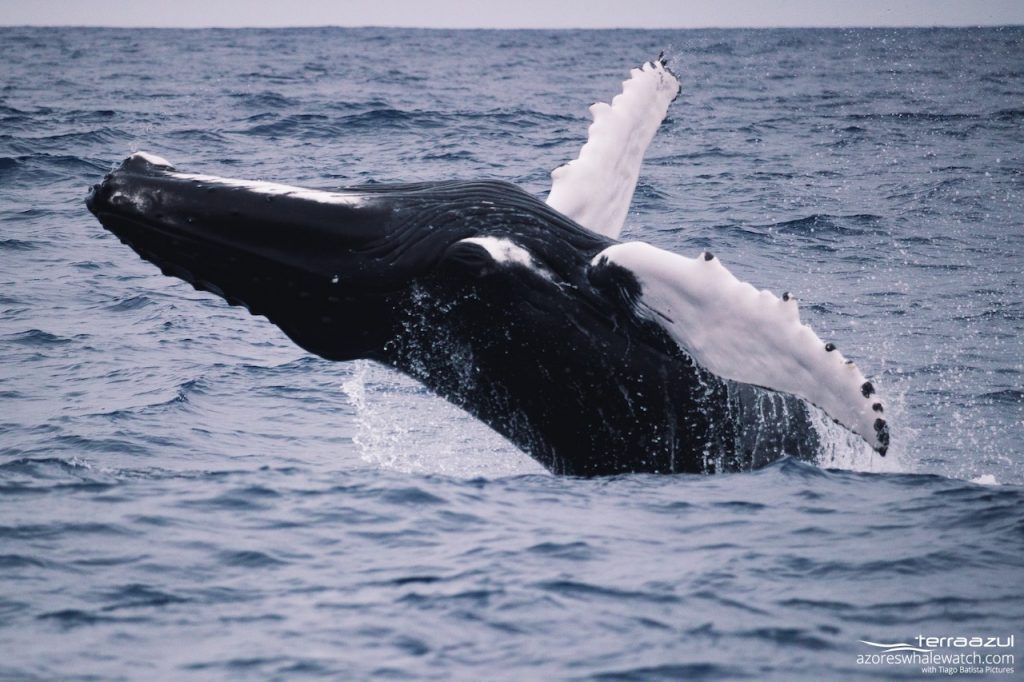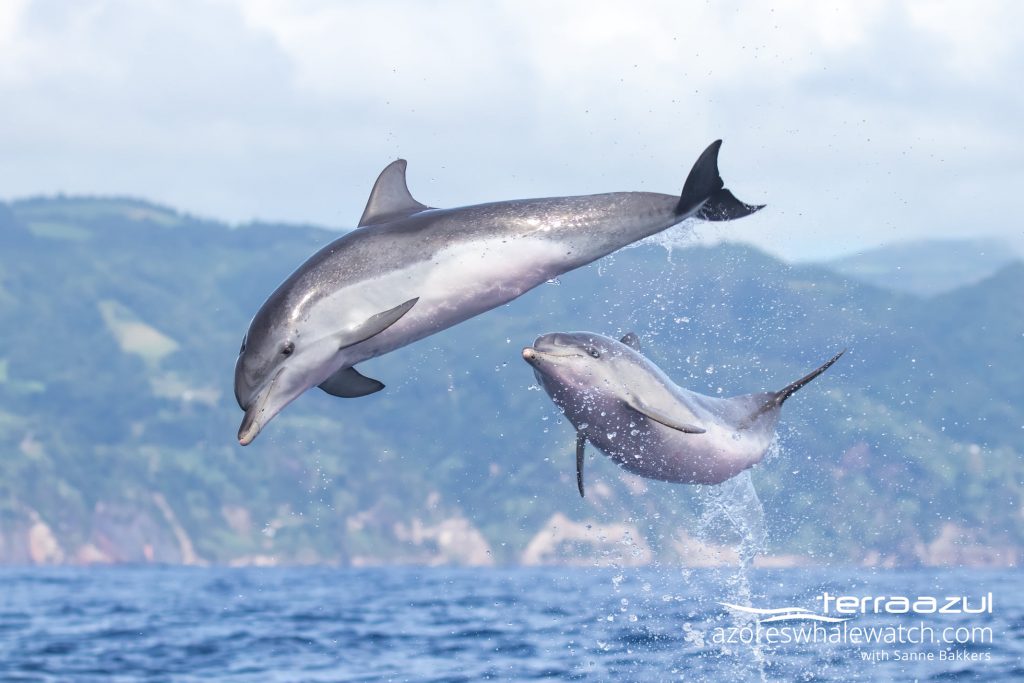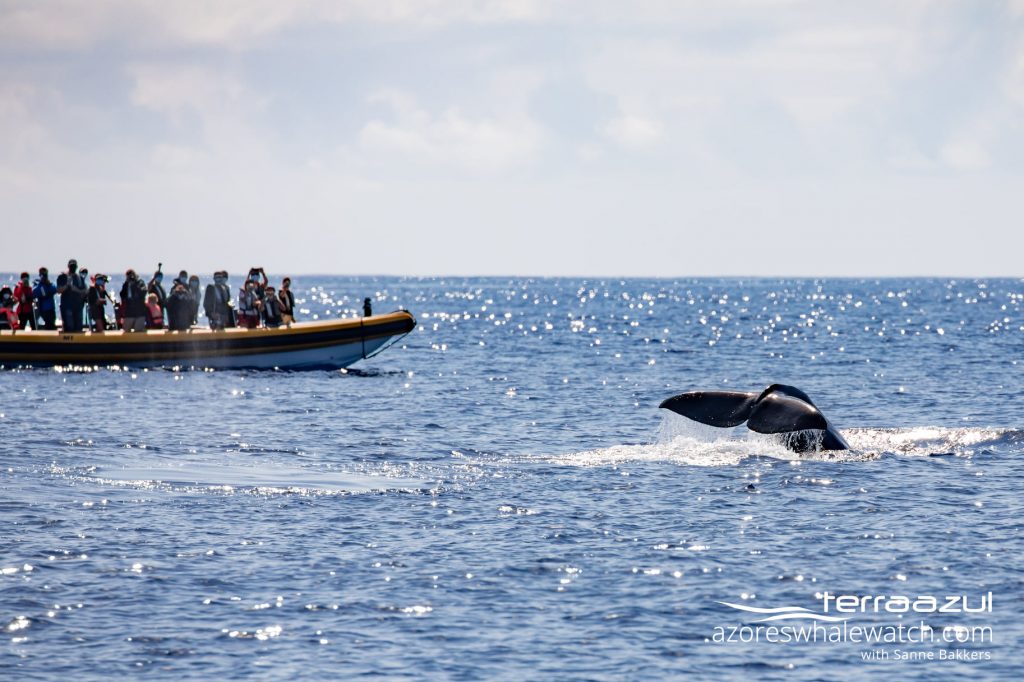The Azores archipelago constitutes one of the most remote and pristine places in the world. Lying on the North Atlantic Ocean, these nine islands are a long way from the European continent, roughly 1,600 kilometers west of mainland Portugal.
It is precisely this remoteness that has kept this archipelago’s natural landscapes nearly intact. They are known as the Hawaii of the East, due to their volcanic craters and turquoise lagoons emerging, creating a subtropical wonderland full of life.
With a vastly rich surface, the aquatic life below the Atlantic Ocean is just as abundant. Home to many species of whales and dolphins, turtles, and other marine animals, Azores is notably one of the best places to go whale & dolphin watching worldwide. This next article will guide you through all there is to know about whale watching in the Azores, as well as the boat tours you need to take part in to encounter these marine mammals.
What is the best time to go whale watching in the Azores?
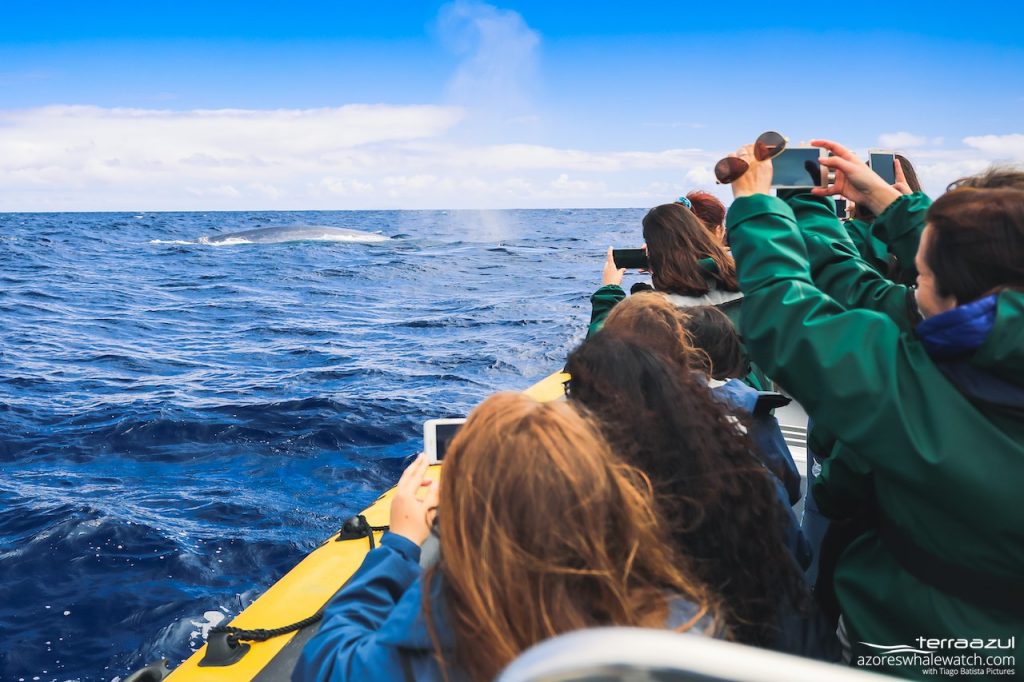
The spring months are usually the best time to spot these majestic creatures, as their annual migration takes place, especially during the months of April and May.
They breed in the tropical waters during the cold winter months, preparing their calves for the long voyage to the North Atlantic. The Azores constitutes a crossing point in the journey to their final destination: feeding grounds near Greenland, Iceland, and Norway. On their way, they pass through the Azores from March to June, staying several days to feed on the coast of the archipelago.
On the other hand, summer is the best season to get a closer look at our favorite and friendly cetaceans, dolphins. Larger groups of families and friends pass by near the island’s waters when conditions are calmest and warmest. However, no matter the time of year you decide to visit the Portuguese archipelago, you’ll most likely get to encounter some of these new friends at sea.
There are 4 resident species that can be seen all year round: common dolphins, bottlenose dolphins, Risso’s dolphins, and sperm whales.
Which whales and dolphins can be seen in the Azores?
From resident to migratory species, the Azores are a hotspot thanks to its nutrient-rich waters. A staggering number of 28 out of the 87 existing species of cetaceans have been sighted in the region.
Among them, we can find the Blue whale, Fin whale, Sei whale, and Pilot whale. Besides the Common, Bottlenose, or Risso’s dolphins, other rarer dolphins such as the Striped dolphin or the Atlantic Spotted dolphin also inhabit this region. Orcas (also known as killer whales) can be spotted, although the chances of seeing the biggest member of the dolphin family are lesser.
The huge size of these animals will definitely blow your mind. The Blue whale is considered the biggest animal in the world (the largest one ever known was about 33 meters long).
Sperm whales can be seen year-round in the Azores and have become a prominent species in this area, as well as the largest animal with teeth that currently exists.
Which is the best island for whale watching in Azores?
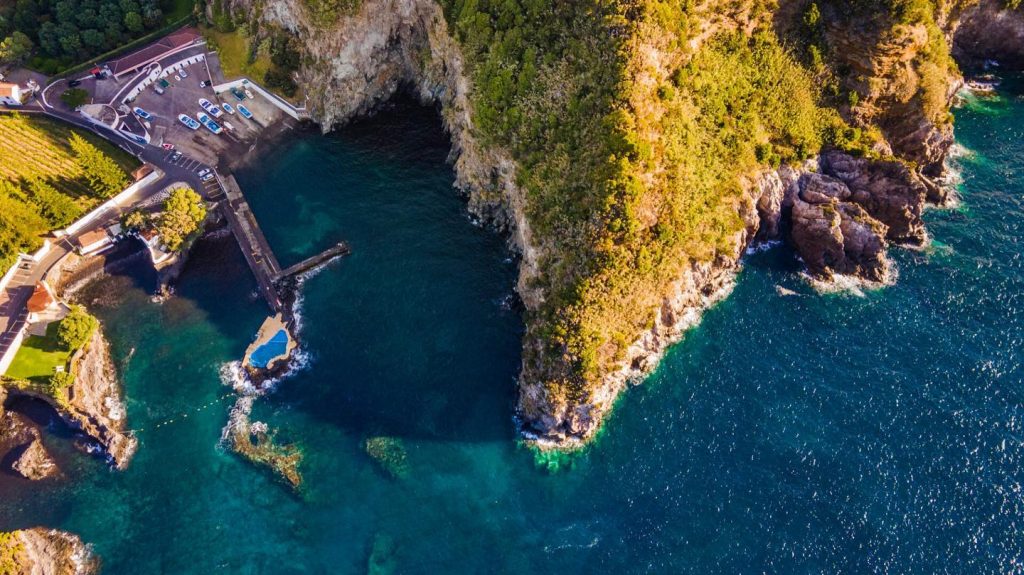
The island of São Miguel is one of the largest of the Azores islands, offering curious visitors the chance to hop on a boat for a whale-watching adventure departing from Marina de Vila Franca do Campo harbor. If you are interested in spotting a blue whale or fin whale, São Miguel is a safe bet!
Other smaller islands like Ilha do Faial offers maritime expeditions along the coastal waters departing from Marina Bar Esplanada harbour, in the village of Horta.
What type of boat tours can you find for whale watching?
The best option when it comes to experiencing these amazing animals from up close is to join a whale & dolphin watching boat trip!
Together with biologists and naturalist guides, you will explore the season’s marine biodiversity of the Azores Islands. It is also a great opportunity to learn all about local wildlife species, their natural habitat, migration, and behavioral patterns, as well as educate yourself about the importance of preserving the ecosystem and protecting the marine environment where all these species are able to thrive.
Aboard a specialized zodiac boat, with this smaller boat, you are able to get closer to the dolphin and whales without interfering with their habitat.
This activity is perfect for families with small kids who are eager to see these friendly cetaceans up close, or any planet lovers on the lookout for new experiences and connecting with nature.
If you still need reasons to visit the archipelago, Azores was awarded top honour as the world’s first leading sustainable tourism destination! You can enjoy your whale watching experience and know you are contributing to a better future for our magnificent, diverse planet.

